Improving Social and Mobility Needs of Elderly
This project explored the social and mobility challenges faced by elderly individuals in India. By focusing on their daily lives, motivations, and pain points, the goal was to create solutions that enable independent living, improve emotional well-being, and foster stronger social connections.
ROLE/TEAM
Role - UX Designer
Team - Sri Varshini, Sharath, Saketh, Joseph, Sri Kiran
Responsibilities - Conducted secondary research, brainstorming sessions, created personas, defined points of view, and contributed to solution ideation.
.
TOOLS
Figma, Contextual Inquiry, User Observation, Persona Development
CLIENT/DATE/DURATION
Internal Research Project, 2023, 6 months
The Challenge or Problem Statement
One in six older adults experiences loneliness and social isolation, which negatively impacts their quality of life, emotional well-being, and physical health. Additionally, age-related mobility issues hinder their ability to engage in social interactions and maintain independence
Key Issues:
1. Elderly individuals struggle to maintain social connections due to mobility limitations and family discouragement
2. Existing social systems and resources are insufficiently accessible or tailored to their needs
3. Emotional stress due to reduced independence and lack of community support further exacerbates their isolation
Why It Matters
Addressing these challenges not only improves the quality of life for elderly individuals but also fosters an emotionally healthier society. It strengthens intergenerational bonds and builds understanding among various stakeholders involved in elder care.
Goals
Goal 1:
Understand the social interaction and mobility needs of elderly individuals to address their isolation and improve independence
Goal 2:
Develop solutions that reduce mobility barriers and enable participation in outdoor social interactions
Goal 3:
Create resources that empower families and communities to provide meaningful support for elderly individuals
.
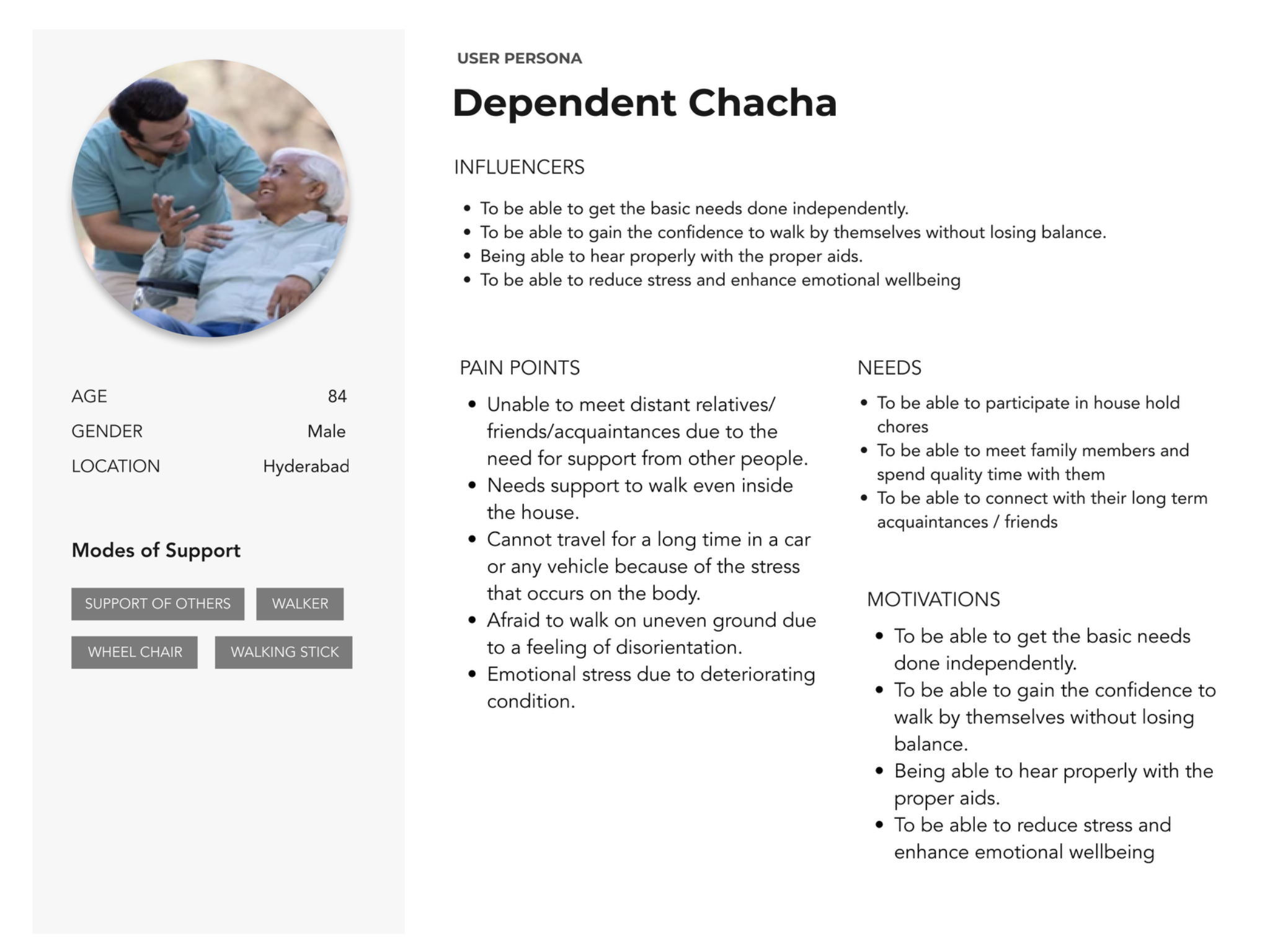
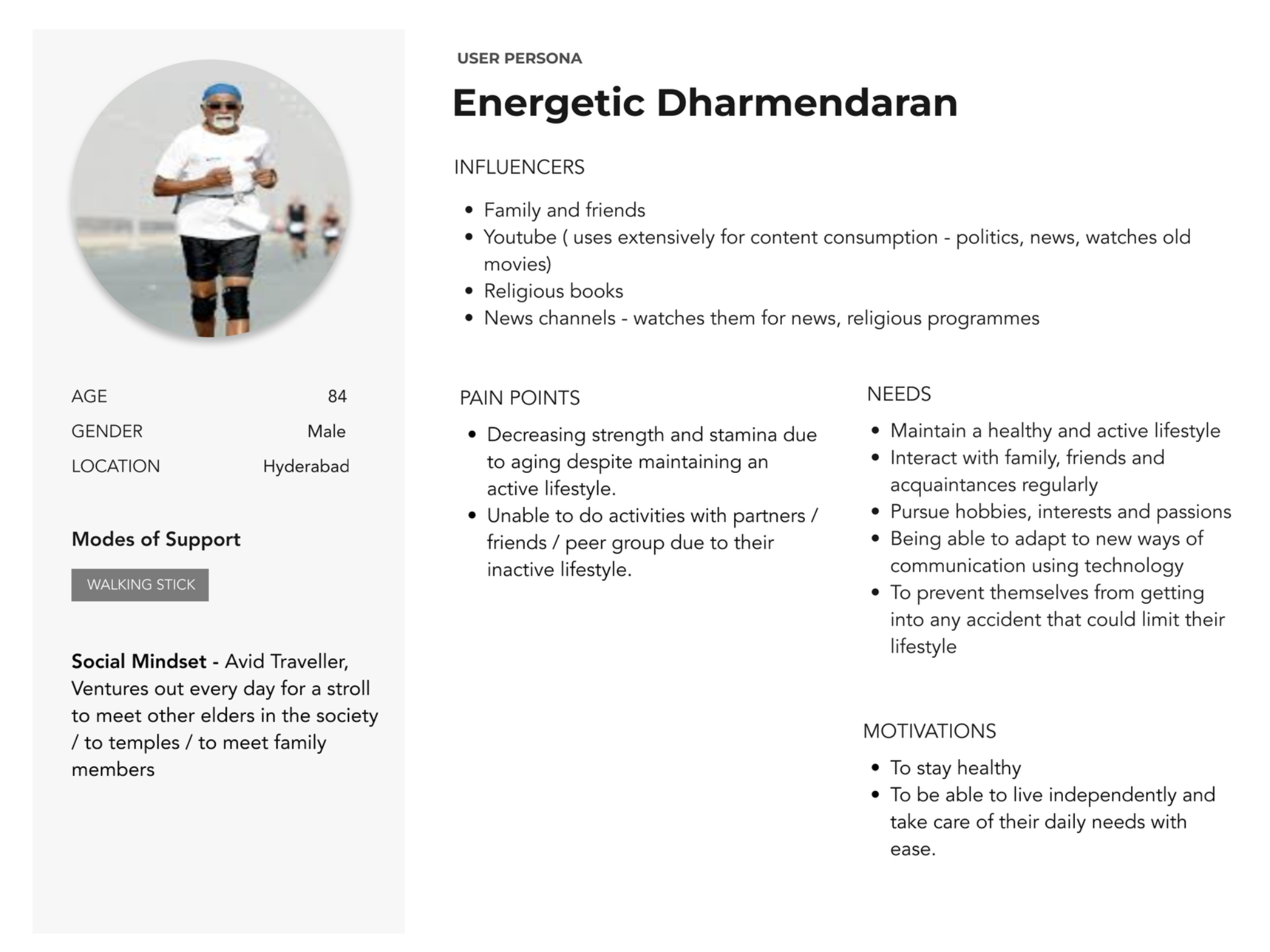
Research & Analysis
Objectives:
1. To understand the motivations behind social interactions for elderly individuals.
2. To identify the role of mobility in achieving their social interaction goals.
3. To uncover the challenges they face in outdoor activities and how these are currently addressed.
Methods:
• Interviews: Conducted at participants’ homes to understand their daily routines, challenges, and motivations.
• Observation: Studied participants during day-to-day activities to identify patterns and mobility constraints.
• Contextual Inquiry: Asked participants about their daily lives while observing their behaviors in real-time.
Stakeholders:
1. Primary Users: Elderly individuals aged 60+ from urban middle-class families.
2. Secondary Stakeholders: Families, doctors, healthcare experts, NGOs, old age homes, and government bodies.
Key Research Questions:
1. What types of social interactions do elderly individuals currently engage in, and how often?
2. What mobility challenges do they face, and how do these affect their social interactions?
3. What support systems do they rely on, and how effective are these?
Insights from Research:
1. Independence and Mobility: Elderly individuals often feel restricted by their inability to travel independently due to physical or safety concerns.
2. Fear of Isolation: Families tend to discourage independent travel, fearing accidents, which further isolates the elderly.
3. Emotional Health: Social interactions are critical for their emotional well-being, but limited mobility reduces opportunities for engagement.
Storyboard
Illustrated a scenario where an elderly individual is introduced to a wellness-focused community club by their family. The club offers yoga, meditation, physiotherapy, and personalized wellness plans to improve both physical and emotional well-being.
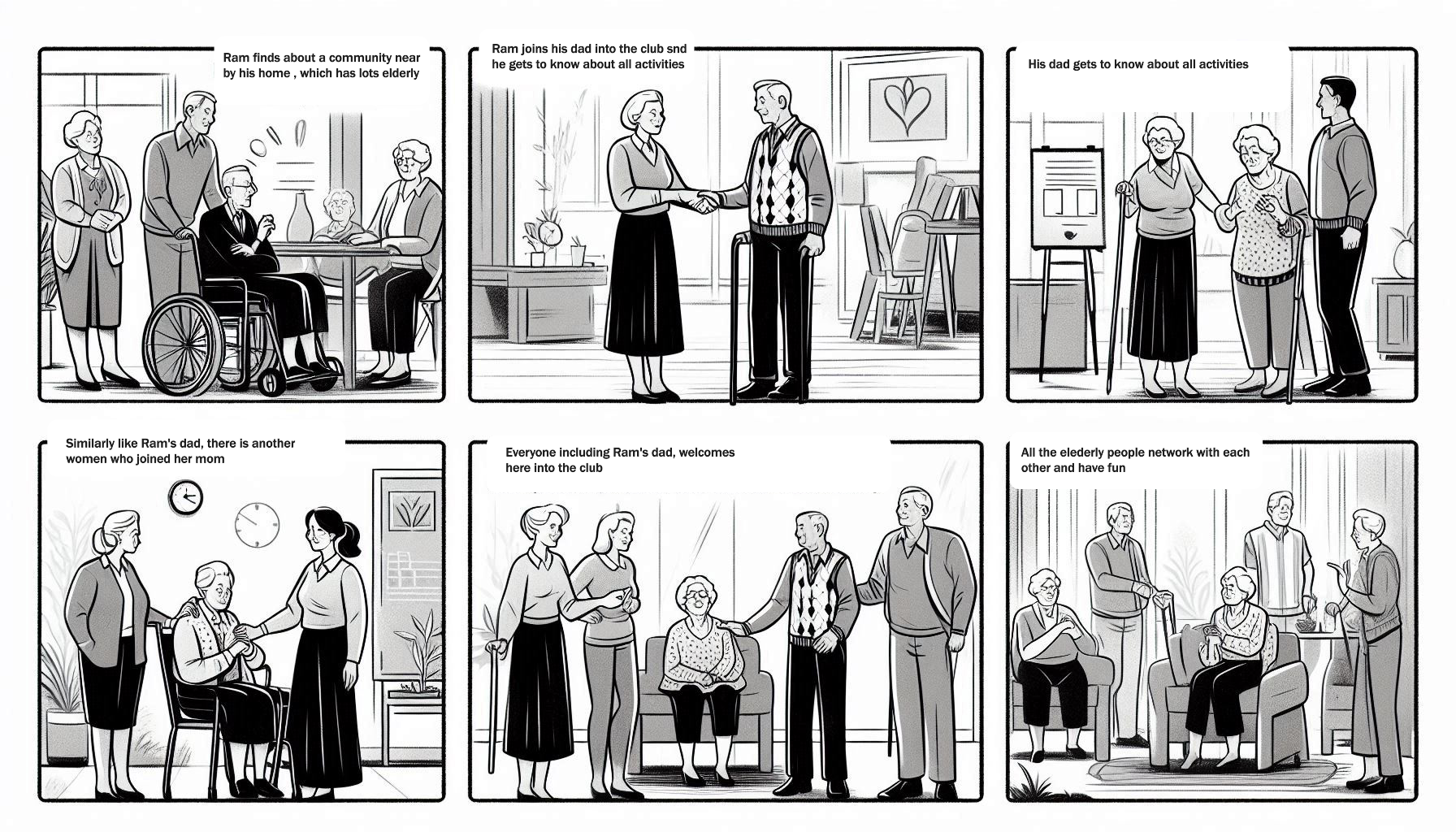
Testing & Feedback
Usability Testing:
Conducted tests with elderly individuals and their families to evaluate ease of use and functionality.
Key Findings:
1. Elderly users found the app intuitive and appreciated its focus on social and physical activities.
2. Families valued the app’s ability to support independence while ensuring safety.
Iterations Based on Feedback:
• Improved navigation cues for better usability.
• Added safety reminders and tips tailored to the needs of elderly users.
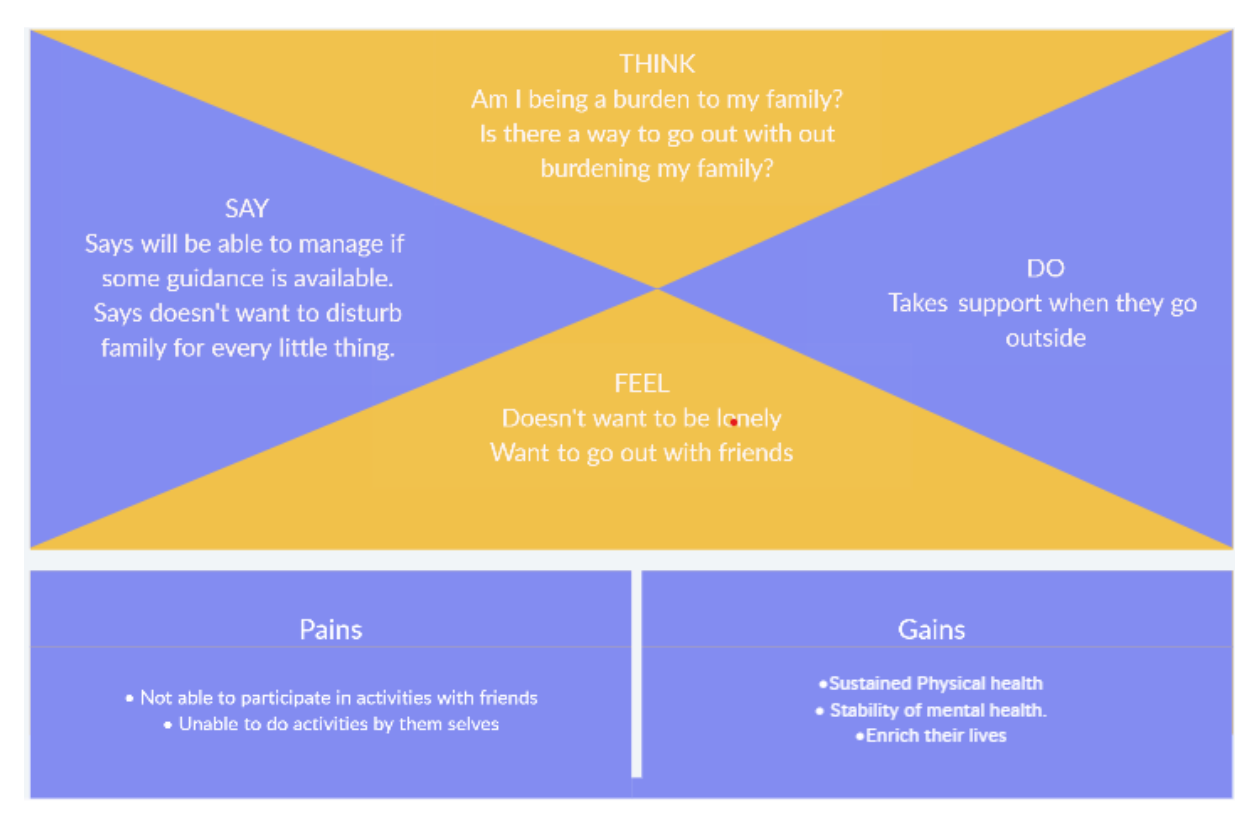
Empathy Map
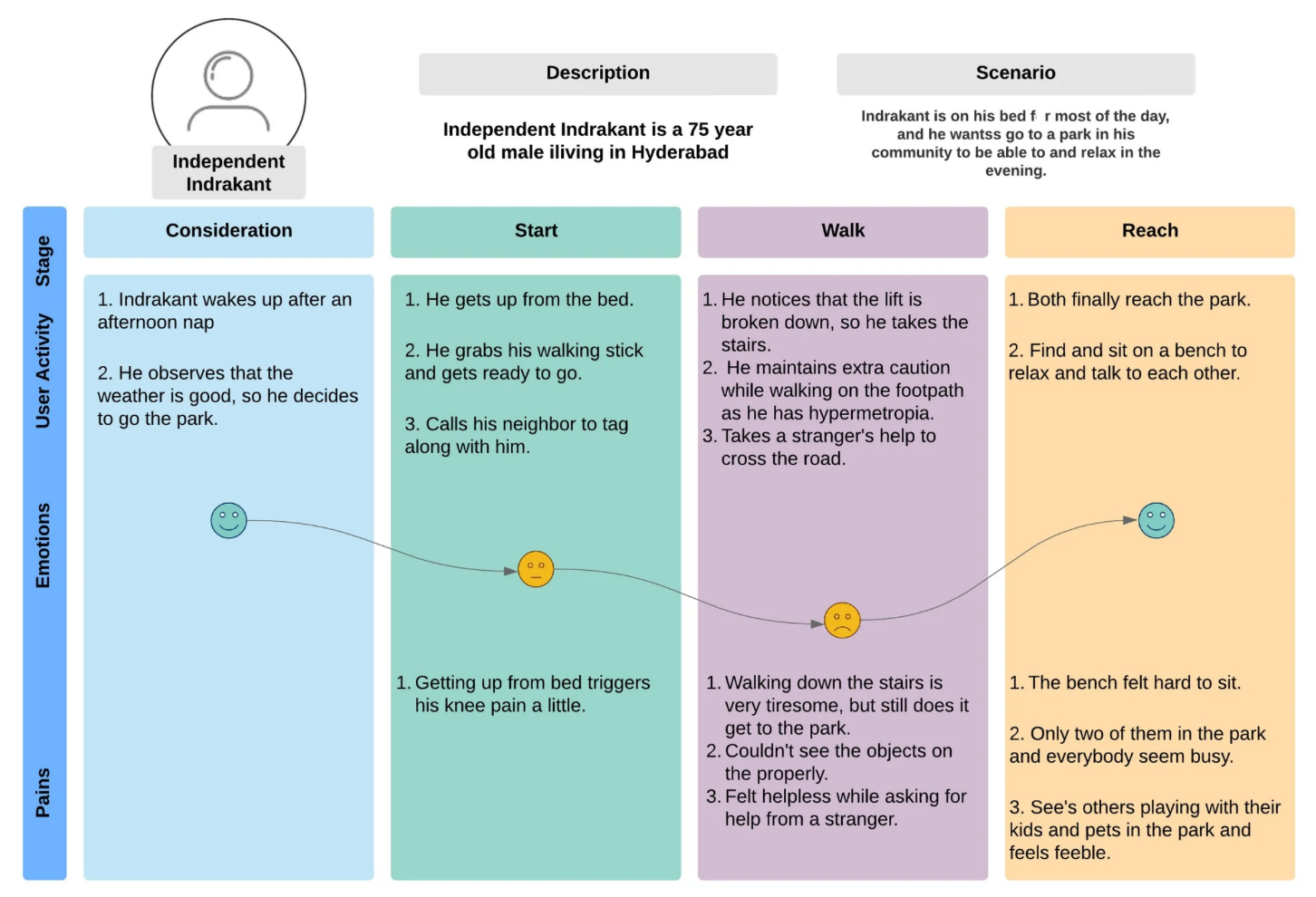
Journey Map
User Flow
Flow:
1. Assessing personal mobility needs and goals.
2. Participating in customized social and physical activities.
3. Engaging with a connected community of peers, caregivers, and family.
This flow emphasizes independence and fosters an ecosystem of support for elderly individuals.
Conclusion
This project successfully addressed the social and mobility needs of elderly individuals, fostering independence and emotional well-being. By leveraging user-centered design and community support, it created an ecosystem where elderly users could thrive, contributing to a healthier and more connected society.
This case study captures every detail and provides a comprehensive view of the project, ensuring clarity, engagement, and a focus on impact. Let me know if there’s anything else you’d like to adjust!
Results & Impact
Outcome Metrics:
• 40% increase in participation in social and physical activities among elderly users.
• Enhanced confidence in independent mobility.
• Significant improvement in emotional well-being due to regular social interactions.
User Testimonials:
Elderly users reported feeling more connected to their peers and family, with improved emotional and physical health.
Challenges & Learnings
Challenges:
1. Resistance among elderly users to adopt new technology.
2. Initial lack of family involvement in supporting elderly users.
Solutions:
• Simplified app design with user-friendly interfaces.
• Conducted family-oriented training sessions to ensure collaborative support.
Learnings:
Designing for elderly users requires a deep understanding of their emotional and physical constraints. Empathy and iterative testing are essential to creating effective solutions.